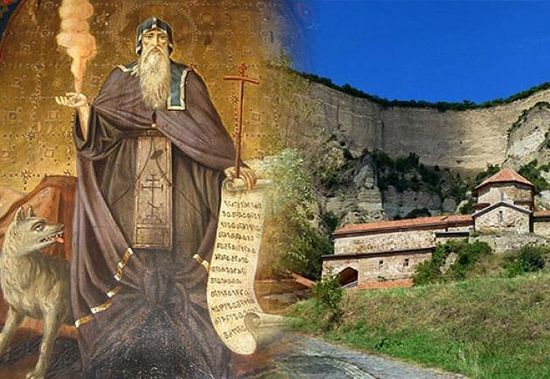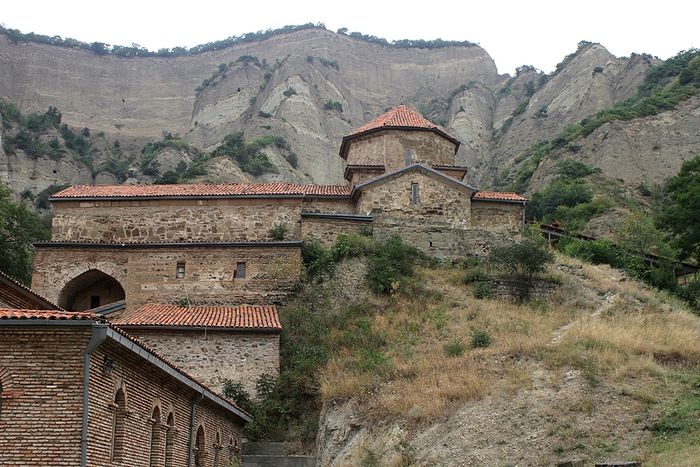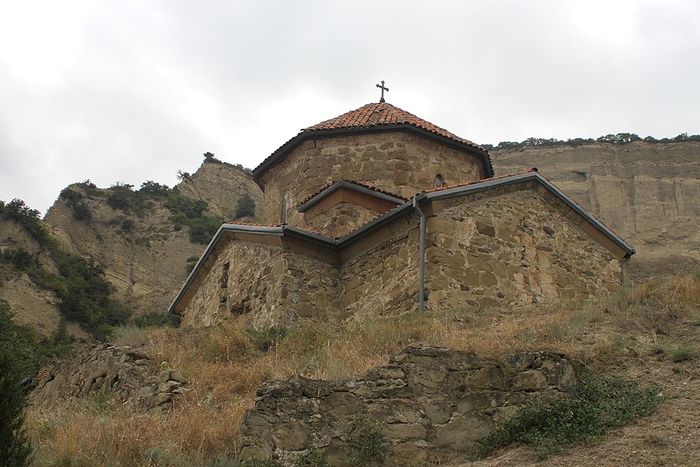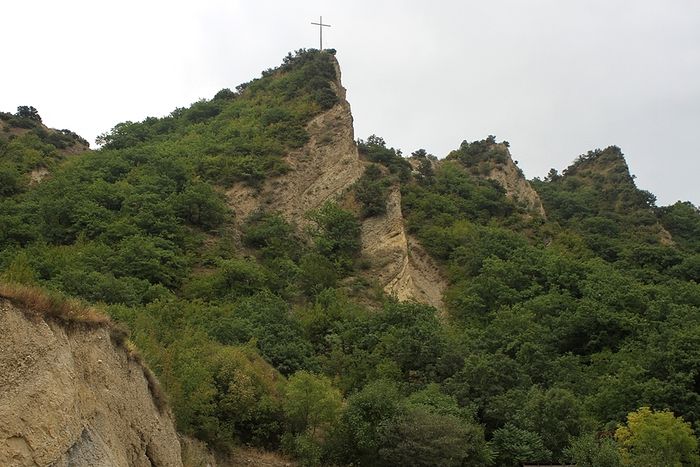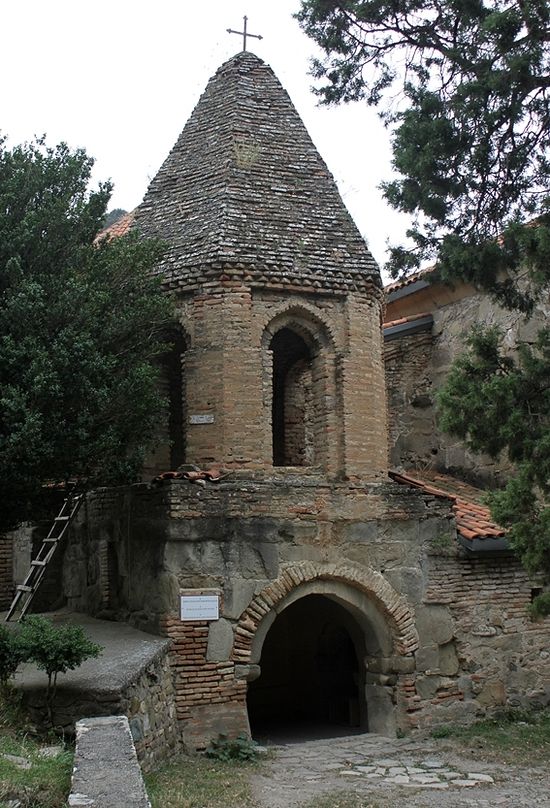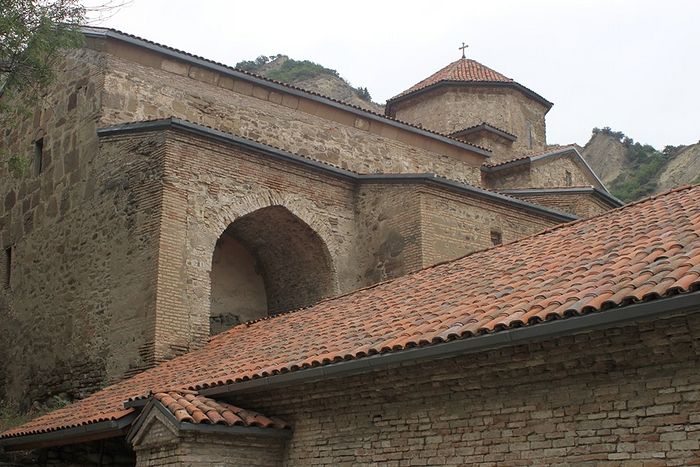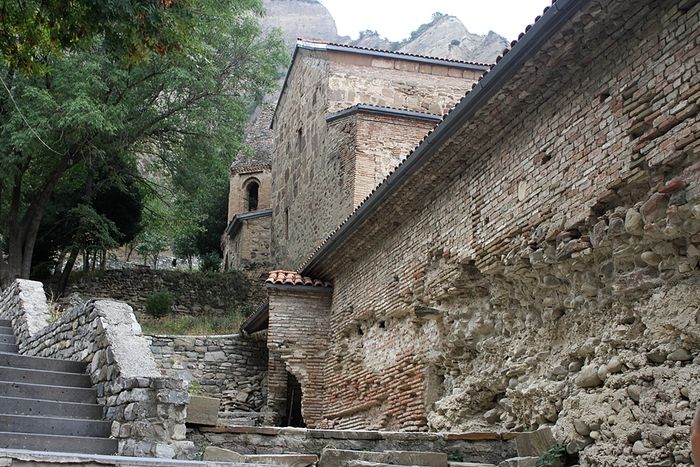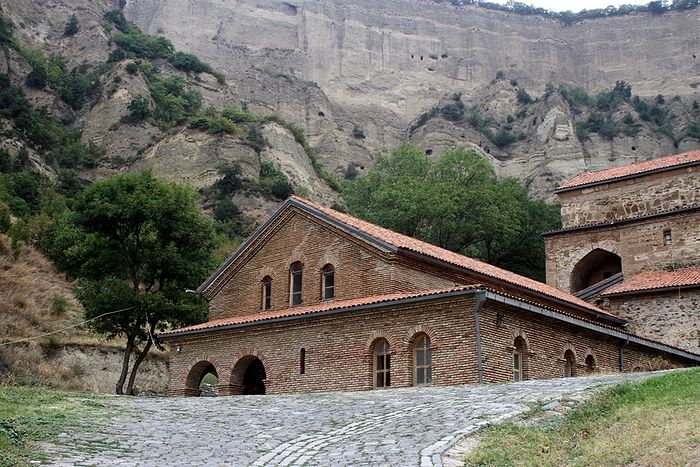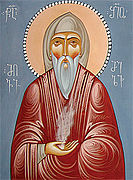On May 9/22, the Georgian Orthodox Church celebrates the memory of Syrian-Antiochian St. Shio of Mgvime the Anchorite (sixth century),1 one of the founders of Georgian monasticism. Like the first monks of Kievan Rus’, the Christian anchorites (hermits) of Transcaucasia secluded themselves in caves, and St. Shio of Mgvime or St. Shio of the Caves (as Mgvime means cave in Georgian) became one of the pillars of the faith of Iberia (ancient Georgia, a Portion of the Mother of God)2.
St. Shio-Mgvime Monastery (which could be translated as St. Shio Caves Monastery), is one of the most ancient monasteries, not only in Georgia, but in the entire Christian world. Founded in the fourth century, it is still active today, and continues the prayer and glorification of God. No wonder many Georgians considered that with the revival of this monastery, the revival of the Georgian Church in our time also began.
The ancient monastery is located 9 kilometers away from Mtskheta, the ancient capital of the Georgian Kingdom, in a narrow limestone gorge and it can be reached only by one single road. Regular transport never drives across this mountain path, and only a few years ago, the ancient road was covered with asphalt and became convenient for pilgrims to arrive across. This monastery, even in the twenty-first century, looks like a monastery—a place of seclusion. There are no crowds of people or noise. In general, this place is ideal for a monastery, given the fact that it used to be much more remote, and the place was inhabited by wild animals. Few people know that in antiquity, tigers and leopards were found in Georgia, and Georgia was then called by the Persians and Arabs, “the country of wolves” (gurğān, Gurdzhistan, Gurzan).
St. Shio is among the Great 13 Assyrian Fathers, who came at the end of the fifth century from Antioch to preach Christ. The Venerable John, by the will of God, chose twelve disciples to preach the Gospel with him in Iberia. One of these followers was Shio, and this name itself was derived from Shimon—Simeon. The saint went for solitary prayer to the gorge, in which later arose the famous monastery in his honor. St. John said to St. Shio the following words: “My Son! Go where the Lord Himself will lead you. The Master, our Lord Jesus Christ revealed to me, that you must lead a solitary life, and meanwhile you will be the Abba of the great Lavra.” These words were prophetic, already at the end of the sixth century, the monastery was inhabited by more than 2000 monks!
The Venerable Shio did not seek the glory and veneration of people, but most of all he wanted to communicate with God. He secretly lived in a cave, and was once found under miraculous circumstances by a certain Evagrius, the head of the fortress. During the hunt with his servants, he noticed that a dove carried food in its beak and flew into the cave. There he discovered a praying man—it was the great Shio. The bird fed the hermit, just like the crows fed the Old Testament prophet Ilia. After meeting the saint, Evagrius completely changed his life, sold his estate and distributed it to the poor. He dug a new cave for himself, and stayed here to live as a monk. Subsequently, he would become the next Abbot of the monastery, which was formed by like-minded followers of St. Shio. And now, on the high sandy slopes you can see these caves, where hermits lived in antiquity.
St. Shio is often depicted on his icon with a wolf, and this is not an allegory at all, but the evidence of a wonderful episode from his life. The monks complained to the saint that wolves often attack the monastery herd. The saint prayed, and, as the legend says, he told the wolves gathered from the forest not to disturb the brethren, and leave these places. But one wolf needs to stay and guard the herd for the damage caused. And so it happened: The wolves no longer attacked; only one wolf guarded the herd for six years, and did not eat meat, until another case occurred. Once a donkey fell into the canyon, but one of the monks began to tell the saint that it was the wolf that had eaten him. After the truth became clear, the saint told the wolf that he was free, and since then, the predator went into the forest and did not reappear.
An interesting story is preserved about finding water. The monks needed water and they brought it from far up the mountain. Once a monk broke the clay vessels with water and cried from fatigue and sorrow. Through the prayer of the Venerable Shio, a water source called the “Tears of Shio” began to flow near the caves.
Sometimes the saint is portrayed with smoking incense in his hand. This is also connected with the legend about the construction of the first temple, which has survived to this day! St. Shio himself found the right place to build a church in honor of St. John the Baptist, and to do this he put burning incense on his hand, and went where the smoke was pointing. This was the very first building of the St. Shio-Mgvime Monastery, built in the period between 560-580 A.D.
The Venerable Shio spent the last years of his life in seclusion. Before that, he wrote 160 teachings that the brethren were to read on Sundays. After the creation of the monastery, he retired for 15 years in a cave near the temple, without going out into the world, and eating only water and prosphora. Towards the end of his life, he increased his ascetic feats, living in a cave similar to a well; and there he departed to God. His relics were preserved in this place for many centuries, and were a place of veneration.
The flourishing of the monastery occurred during the reign of the Blessed King David IV “the Builder”, who made the Shio-Mgvime Monastery his royal possession; and the monastery became the center of cultural and religious activity of Georgia. The Church of the Theotokos, built around the year 1100 on the initiative of David the Builder, has also been preserved, and now it is the central church of the monastery. From the chronicle of 1202, it is known that Bishop Anton, under Queen St. Tamara, built a 2-kilometer long water supply for the monastic community, stretching from a neighboring village. As for the Church of the Mother of God, its appearance was changed after the dome was destroyed during the invasion of the Persian Shah Abbas I in 1614. After 65 years, it was restored, but in a simplified form, like a basilica. Some frescoes and murals have been preserved, and although the temple is quite minimalistic and simple in its architecture, it is impressive inside. And the venerable age itself inspires respect.
In later times, the monastery was attacked and plundered by the Arabs and Persians. Once under Shah Abbas II, the relics of St. Shio were taken out, along with the valuables. A plague struck the inhabitants of Persia, and for three years, all the first-born people and animals in the country died. One of the Persian sages was told in a dream by an old man who appeared to him: “Are you tired of being tormented? Return my remains to Georgia!” The Persian told the ruler about this and other matters, saying that unlike others he was not afraid to speak the truth, as he was already old. The Shah ordered the return of the relics of St. Shio of the Caves in a golden sarcophagus to Georgia. As soon as the caravan with relics crossed the border of Iran, the pestilence ceased. Remembering this event, the Iranians every year up to the godless Bolshevik revolution donated a very large sum to the monastery in honor of that event.
After the Persian invasion, Prince Givi Amilahvari restored the monastery in 1678, but by 1720 the Ottoman occupation of Georgia led to another destruction of the monastery. Resuming its life in 1733, it was again destroyed by the Persians. The St. Shio Caves Monastery was revived, but the monastery was never able to regain its past significance in the spiritual life of Georgia. The Shio-Mgvime Monastery lasted until the nineteenth century, and after the raids of the Lezgins3 was empty, but after a while it was again revived by Bishop Alexander.
In the Soviet period, the persecution of the monastery began. There is a known case of the Abbot of the monastery, who was shot after he refused to let drunken soldiers into the monastery walls. The last monks lived here under Soviet rule, until around the 1960s. The relics of St. Shio were kept for fifteen hundred years in the monastery, except for the aforementioned event with the Persians, until the twentieth century, when the hand of the godless soviets rose against the holy site and organized an arson. Part of the relics survived, and are now in the Samtavro monastery near Mtskheta. For thirty years the monastery was completely empty; the revival of monastic life occurred in the 1990s.
Christians who come to this holy place are impressed not only by the beauty of the surroundings, the clean air, the silence, the height of the mountains and hills (the monastery is located at an altitude of 750 meters above sea level), not only ancient churches and caves, but the place itself, blessed by prayers of the righteous—the most famous of whom is the holy righteous St. Shio.
Holy Father Shio of the Caves, pray to God for us!

